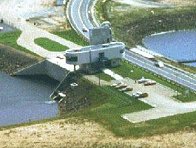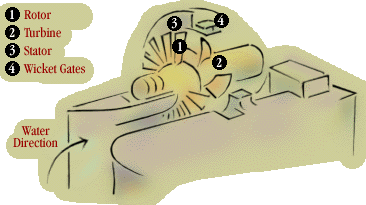
ISKORIŠTAVANJE ENERGIJE IZ MORA
Preneseno s BBC News
ENERGY - ALTERNATIVES TO OIL
Bioenergy
Bioenergy comes from burning biomass – organic matter such as wood or plants. It supplies more than 90% of total energy demand in Nepal and Malawi, and 25% to 50% in large industrialising countries such as China, India and Brazil. Austria uses bioenergy for 13% of all its energy needs.
One of the crudest forms of bioenergy is the open burning of dung or wood for cooking in developing countries - though one power plant in the UK burns chicken dung. This burning is often done indoors - a practice responsible for about two million air pollution-related deaths each year.
But bioenergy can also be used to convert sustainably grown crops or agricultural, industrial and municipal wastes into useful energy. Methods range from adding biomass products into coal-fired boilers, to fermenting sugar cane to produce ethanol-based car fuel, to burning methane gas produced as biomass decomposes.
Burning biomass can still release greenhouse gases, although plants grown for fuel manufacture also absorb carbon dioxide while they are growing. Depending on the fuel and process, bioenergy can be much cleaner, and the sources more renewable, than fossil fuels.
Geothermal
Geothermal energy comes from the heat in the Earth’s core. In Iceland nearly all buildings are heated in this way. Geothermal power plants contribute significantly to electricity supply in El Salvador, the Philippines, Japan, Mexico, Italy, New Zealand and the western United States.
In some geothermally active regions, the heat from rock and water is near enough the surface to be accessed cost-effectively. Hot water or steam is pumped from underground. Steam can be used to turn turbines directly. Hot water can be pumped to the surface under pressure and turned to steam by suddenly decreasing the pressure. Alternatively, the heat can be used to vaporise a second liquid with a lower boiling point than water – the resulting gas is then used to turn turbines.
The volume of water taken out of the Earth can be re-injected, making geothermal power a sustainable energy source.
Ocean energy
The ocean offers two types of energy - thermal energy from the Sun's heat, and mechanical energy from the tides and waves.
Oceans cover more than 70% of the Earth's surface, making them the world's largest solar collectors. According to the National Renewable Energy Laboratory, if less than 0.1% of this solar energy could be converted into electric power, it would supply more than 20 times the amount of energy consumed every day in the US.
Electrical energy can be generated using a temperature difference of 20°C between deep ocean water and Sun-warmed surface water. The warm surface water itself can be turned to steam in a similar way to geothermally heated water, or it can be used to vaporise a chemical with a lower boiling point. The steam drives a turbine, before being condensed using the colder deep water. Tropical island states are best-placed to benefit from the technology.
Several devices have also been developed to generate electricity from the motion of tides and waves. One wave power facility on the Scottish island of Islay produces enough power for 400 homes - electricity is generated as wave motion moves a column of water up and down inside a concrete pipe. Tidal power works in a similar way to hydropower. Water is trapped behind a dam at high tide, and then released - turning turbines to generate power - as the tide ebbs.

|

|